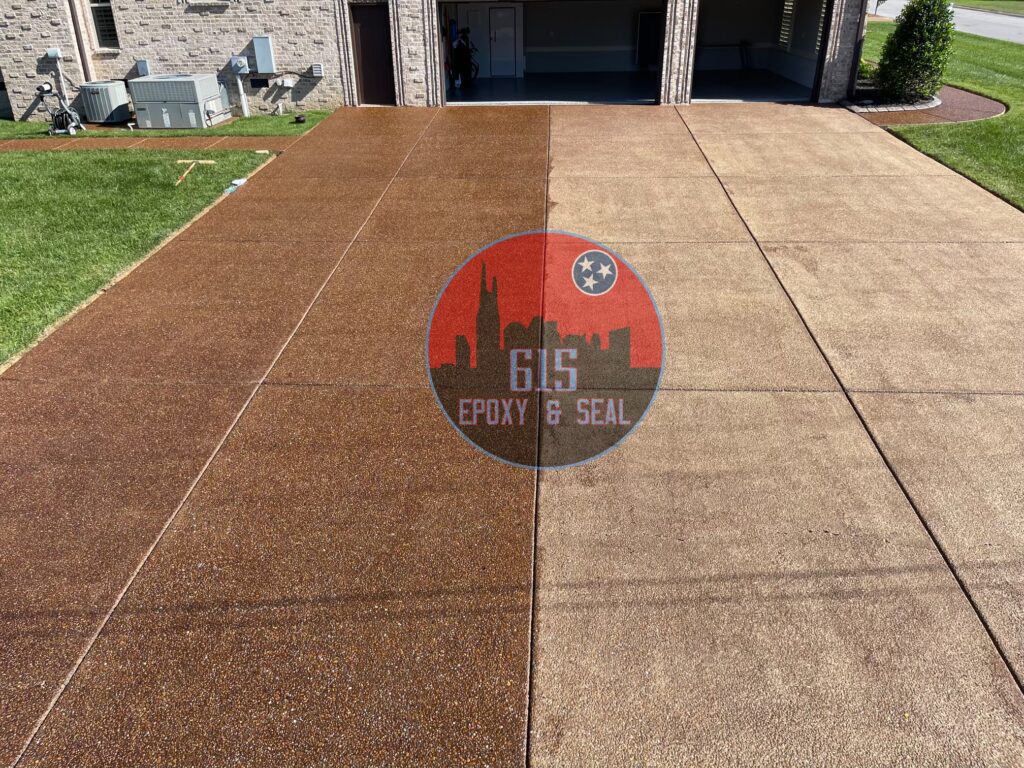
Exposed aggregate concrete is a commonly used for residential driveways and paths as it hides stains and marks well compared to plain concrete. Exposed aggregate surfaces are often sealed when new but many homeowners don’t realize they can restore old surfaces to look like new with a little maintenance and application of a sealer.
While the aggregate or stones in the surface are typically smooth and non-porous, the concrete surrounding these stones has an open pore and is more vulnerable to damage from water and contaminants like algae and oil drips from car engines.
Left untreated, moisture can easily make its way deep into the concrete, which over time will weaken the concrete and cause cracks to appear. Similarly, stains from things like oil, dirt, grime and mould can embed themselves deep into the pores of the exposed concrete, leaving a stain that can’t be removed.
By applying a sealant to exposed aggregate concrete, it helps to protect the substrate from stains as well as repelling moisture which will help to keep the concrete in good condition.
Another advantage of applying a sealer is that it can enhance and deepen the color of the aggregate and depending on the type of sealer, can create a nice wet look finish.
Cleaning and sealing your exposed aggregate driveway and paths is required to protect your investment however what many people don’t realize is that exposed aggregate driveways need to be re-sealed every few years in order to maintain the protective sealer in good condition.
